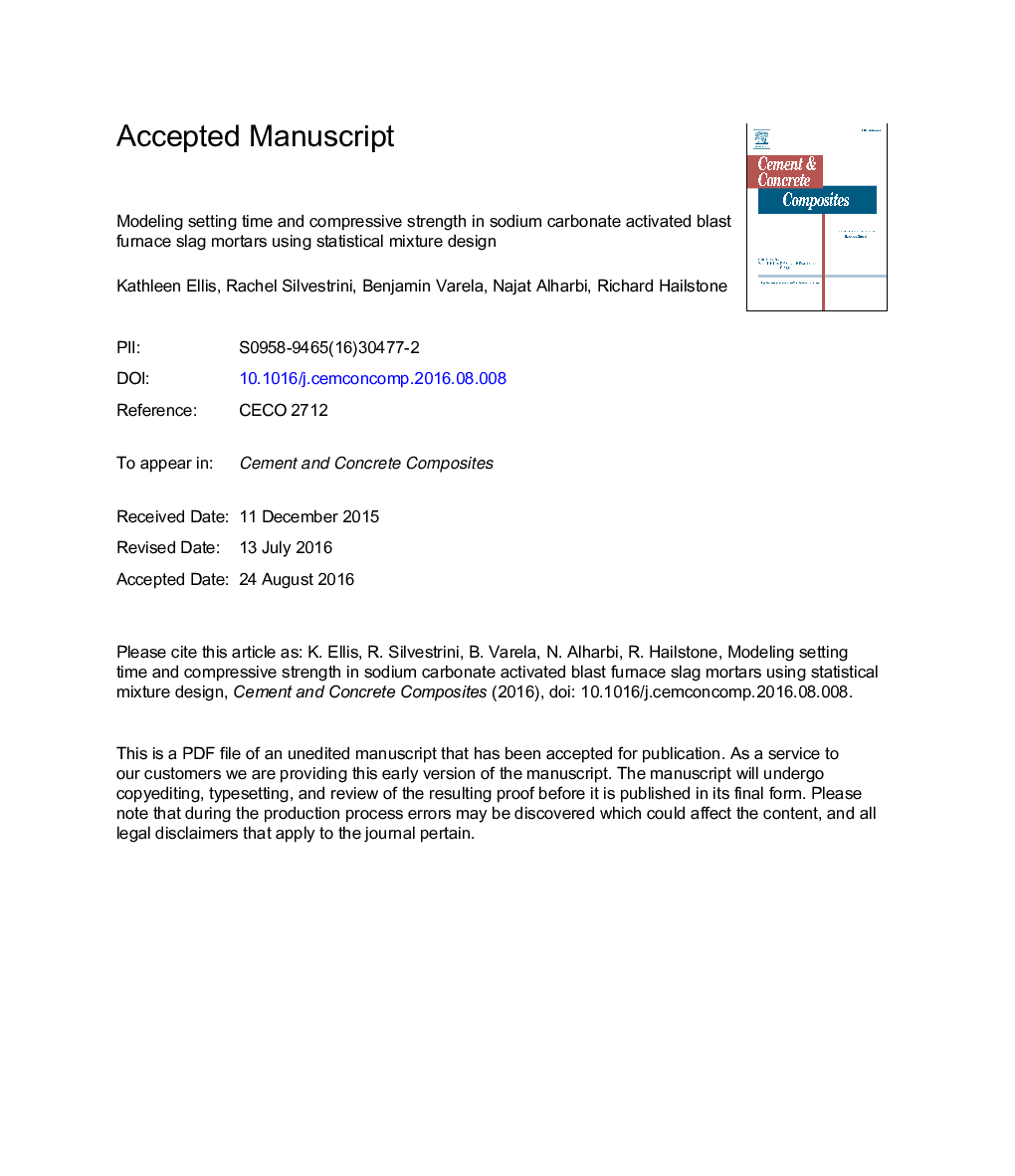| Article ID | Journal | Published Year | Pages | File Type |
|---|---|---|---|---|
| 5436958 | Cement and Concrete Composites | 2016 | 16 Pages |
Abstract
The alkali activation of industrial by-products have the potential to reduce the carbon dioxide emissions form the cement industry and to develop alternative mortars and concretes with properties similar or better than the ones based on ordinarily Portland cement. The used of sodium carbonate as an activator for blast furnace slag offers potential advantages over other Alkali-Activated Materials (AAMs) in terms of environmental impact and cost. This study explores the use of statistical mixture design to determine what affects initial setting time and compressive strength in sodium carbonate activated blast furnace slag mortars. This experimental design approach allows for a more thorough analysis of the effects of the mortar components on response variables over the entire design space. In this study the amount of each component was restricted to certain values in order for the mixture to react and produce a mortar with acceptable mechanical strength and setting time. The mortars obtained were tested according to ASTM C403 and ASTM C109 standards for initial setting time and compressive strength. The statistical design and analysis was done using Design-Expert 9.0. This study finds that initial setting time and compressive strength of these materials are highly dependent on the composition of the materials and proposes a model for setting time and compressive strength prediction. It was found that the two-factor interactions with sodium carbonate are statistically significant in the compressive strength model but not in the initial setting time model. A typical sample was characterized by Scanning Electron Microscopy.
Related Topics
Physical Sciences and Engineering
Engineering
Industrial and Manufacturing Engineering
Authors
Kathleen Ellis, Rachel Silvestrini, Benjamin Varela, Najat Alharbi, Richard Hailstone,
